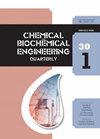2004年罗马尼亚MihDileEti村卡车事故后硝酸铵爆炸后果模拟
IF 0.9
4区 生物学
Q4 BIOTECHNOLOGY & APPLIED MICROBIOLOGY
引用次数: 1
摘要
基于模型的危险物质运输过程中发生的重大事故后果和影响的评价引起了极大的兴趣,因为它可以推导出因果关系密切的相关结论。这种数字(计算机)分析有助于改进危险物质运输的安全法规,以防止造成大量伤亡和结构损坏的重大事故。采用标准的TNT当量数学模型,结合Probit函数技术,对意外爆炸的后果和影响进行了估计。1,2这里的案例研究涉及2004年5月24日在罗马尼亚mihilile本文章由计算机程序翻译,如有差异,请以英文原文为准。
Simulation of the Consequences of the Ammonium Nitrate Explosion Following the Truck Accident Next to MihDileEti Village (Romania) in 2004
Model-based evaluation of major accident consequences and effects occurring during the transport of dangerous substances presents a great interest, because it allows derivation of relevant conclusions on the cause-effect close relationship. Such a numerical (in-silico) analysis helps to improve safety regulations for the transport of hazardous substances aimed at preventing dramatic accidents causing many deaths, injuries, and structural damage. By using the standard TNT equivalency math model, coupled with the Probit functions technique, the consequences and effects of an accidental blast have been estimated.1,2 The approached case study here refers to the accidental explosion of a truck while transporting 20 t of ammonium nitrate (AN) in the proximity of Mihăileşti village (Romania) on 24 May 2004. The model-based simulated accident consequences and effects match the data taken on the spot after the accident. Multiple simulations lead to deriving relevant conclusions of practiced value for improving the transport safety of hazardous substances.
求助全文
通过发布文献求助,成功后即可免费获取论文全文。
去求助
来源期刊
CiteScore
2.70
自引率
6.70%
发文量
23
审稿时长
>12 weeks
期刊介绍:
The journal provides an international forum for presentation of original papers, reviews and discussions on the latest developments in chemical and biochemical engineering. The scope of the journal is wide and no limitation except relevance to chemical and biochemical engineering is required.
The criteria for the acceptance of papers are originality, quality of work and clarity of style. All papers are subject to reviewing by at least two international experts (blind peer review).
The language of the journal is English. Final versions of the manuscripts are subject to metric (SI units and IUPAC recommendations) and English language reviewing.
Editor and Editorial board make the final decision about acceptance of a manuscript.
Page charges are excluded.

 求助内容:
求助内容: 应助结果提醒方式:
应助结果提醒方式:


